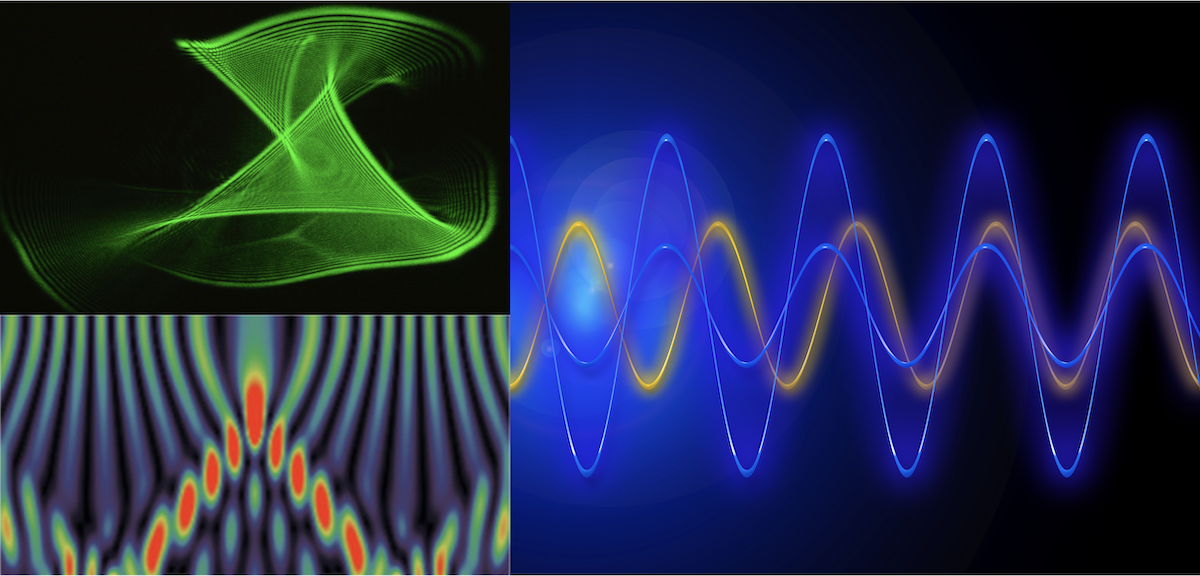Wave geometry and optical field theory
In this area we're focusing on the phenomena lurking between the domains of classical and quantum physics to expose the beautiful unifying mathematical ideas of asymptotics governing the behaviour of light, fluids and atoms.
Many incompletely understood phenomena lurk in the borderlands between physical theories - between classical and quantum, between rays and waves, and so on. These borderlands - the domain of physical asymptotics - are the major focus of this research area.
In particular we are interested in the geometrical aspects of propagating waves, especially their phase. In nature, one never finds the ideal plane waves described in textbooks. Real physical waves, such as light beams, spread, diffract, scatter and interfere in complex and chaotic ways. An intriguing consequence of this is are 'singular' features of waves, such as optical vortices (wave dislocations), which are lines in three dimensions around which optical energy circulates.
Our recent work in this area spans a diverse range of topics, including superoscillations (the physics and mathematics of functions varying faster than their fastest Fourier components), tidal bores such as the Severn bore (where a characteristic form of wave travels upstream against the river’s normal flow), the Aharonov-Bohm effect discovered in Bristol (where a quantum wavefunction of a charged particle acquires a phase shift due to passing around a region with a magnetic field despite never being in that region) and numerous problems involving the structure of diffraction catastrophes, quantum chaology, optical weak measurement, knotted optical vortices and vortices in electron waves.
A particular source of delight is uncovering down-to-earth or dramatic and sometimes beautiful examples of abstract mathematical ideas: the arcane in the mundane. Some examples are: mathematical singularities in rainbows and the patterns on the bottom of swimming-pools, wave caustics caused by a laser pointer shone through irregular bathroom-window glass (as seen in the top-left picture above), a levitating spinning-top illustrating adiabatic stability and geometric phases, twists and turns with a belt illustrating the behaviour of identical particles in quantum mechanics, responsible for the impenetrability of matter, lasers, superconductivity... and tsunamis, which are caustics in spacetime.
